Commercial outdoor seating furniture is an excellent investment for any business and can provide customers with an inviting environment to enjoy their time. With the right outdoor seating, you can create a unique outdoor space and make it an ideal spot for your customers to relax, chat, and dine. Whether you’re looking to set up an outdoor patio, cafe seating, or a garden space, you can find the perfect pieces to appeal to your customers. But before you buy casual outdoor seating, there are a few things to keep in mind. You should consider the types of outdoor furniture available and their features, materials, and benefits. This is where a commercial outdoor seating mega guide can help. It provides you with skilled advice from experts in the outdoor seating industry and enables you to choose the best outdoor seating for your business.
In our mega guide, we’ll discuss the following regarding commercial outdoor seating:
- Types of Commercial Outdoor Seating
- Factors to Consider When Choosing Outdoor Seating
- Materials for Outdoor Seating
- Maintenance and Care
- Design Trends and Inspiration
- Conclusion
- FAQ
Types of Commercial Outdoor Seating
Creating an inviting and functional outdoor space is essential for businesses looking to attract customers and provide a pleasant environment for patrons to relax and enjoy their surroundings. One crucial element that can significantly enhance outdoor spaces is the selection of appropriate commercial outdoor seating. From patio furniture to outdoor benches and picnic tables, a variety of seating options are available to suit different needs and preferences. We will explore the various types of seating and their features, helping you make informed decisions when furnishing your outdoor areas.
Patio Furniture
Patio furniture is a versatile option for outdoor seating, commonly found in restaurants, cafes, and other commercial establishments. It offers both comfort and style, making it ideal for creating inviting outdoor dining and lounging spaces. Tables and chairs are the cornerstones of dining patio furniture. They come in a range of materials such as aluminum, wrought iron, wood, and plastic, each with its own unique characteristics. Depending on the desired aesthetic and durability, businesses can choose from a variety of designs and sizes to accommodate different group sizes and layouts. To provide protection from the sun and create a comfortable outdoor environment, umbrellas, and shade options are essential. Patio and market umbrellas are available in various sizes, shapes, and materials, providing both functionality and appeal. In addition to umbrellas, shade structures, pergolas, or shelters can also be incorporated into outdoor seating areas to offer shade and protect patrons from the elements as a long-term shade solution.
.png)
Outdoor Benches
Outdoor benches are a popular choice for parks, gardens, and public spaces, as well as commercial venues with outdoor seating requirements. They provide a practical and communal seating solution while adding a touch of elegance to the outdoor ambiance. Benches are available in a wide range of materials, including wood, metal, concrete, and recycled plastic. Each material offers unique advantages in terms of durability, maintenance, and aesthetics. Additionally, benches can be found in various styles, such as classic, modern, or rustic, allowing businesses to choose a design that complements the overall theme of their outdoor space. Businesses may have specific requirements for their outdoor benches. Customization options include the ability to add engraved logos, armrests, or backrests, allowing for a personalized touch. When selecting outdoor benches, durability is a crucial factor to consider, as they must withstand constant exposure to changing weather conditions and heavy usage.
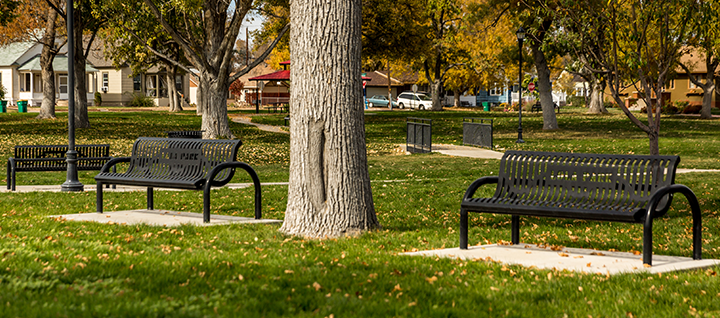
Picnic Tables
Picnic tables come in a variety of sizes and seating capacities, making them ideal for use in parks, campgrounds, and recreational facilities. These tables provide an informal, communal atmosphere, and their multi-size capabilities make them suitable for various outdoor settings. Traditional picnic tables include a long rectangular shape tabletop supported by a frame with attached benches on both sides. These tables are available in different lengths, ranging from6 feet to 8 feet or even longer, allowing businesses to accommodate larger groups. A standard 6-foot picnic table can comfortably seat around six to eight people, while larger tables can accommodate up to 10 or more individuals. They also have many ADA-compatible options for guests who are wheelchair-bound. For a more contemporary and unique seating arrangement, round, square, or hexagonal picnic tables are an excellent choice. These tables typically feature a central pedestal or support structure, with individual seats or benches attached around the perimeter. Round picnic tables often come in diameters of 4 to 6 feet, providing seating for four to eight people, depending on the size. Hexagonal tables offer even more seating capacity, usually accommodating six to eight individuals. To cater to younger guests, it is often beneficial to include children's picnic tables in outdoor seating arrangements. These smaller-sized tables are designed with lower heights and appropriately sized benches, providing a comfortable and safe seating option for children at schools, parks, and outdoor eateries. Children's picnic tables usually accommodate four to six young individuals, allowing them to enjoy outdoor dining or activities alongside their families. Businesses need to consider the dimensions and seating capacity of picnic tables when selecting the most appropriate table design for their space and intended usage so that everyone - regardless of age, size of the group, or physical ability - can enjoy a comfortable seating arrangement.
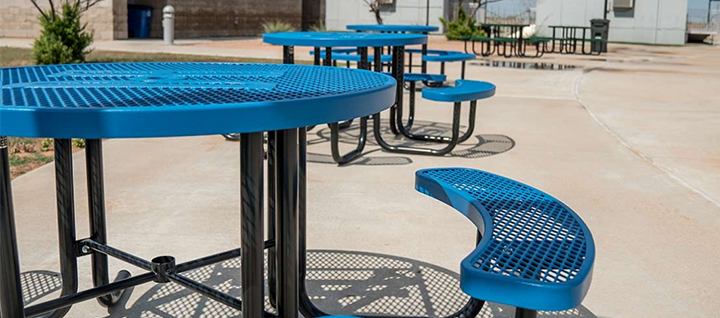
Factors to Consider When Choosing Outdoor Seating
When selecting furniture for your business' outdoor seating area, it is important to consider various factors in order to make the best decision. These factors include functionality and purpose, durability and weather resistance, comfort and ergonomics, aesthetics and branding, space and layout, and budget and cost considerations. Doing so will ensure that you choose the best furniture for your establishment.
Functionality
Does the area require dining-style seating or is it for lounging? Perhaps the seating will be used for outdoor events or gatherings, such as parties and barbeques. It is essential that the furniture is able to appropriately accommodate people's needs while at the same time making the space attractive and inviting. Determine the primary purpose of your outdoor space. If it's mainly for dining, prioritize tables and chairs that provide ample space for food and beverages. For lounging areas, focus on comfortable seating options such as sofas, lounge chairs, fire tables, or daybeds. If your outdoor space will host events or gatherings, consider flexible seating options like modular furniture or movable benches that can be rearranged to accommodate different group sizes and seating arrangements.
Material and Finishes
When it comes to the materials used for outdoor furniture, it needs to maintain durability in your outdoor environment. Materials of outdoor furniture will determine if it will provide long-lasting service or if you will need to replace it year after year. Provine choices include aluminum, wrought iron, teak, and synthetic wicker, all of which are known for their durability and weather resistance. Additionally, to increase the longevity of metal furniture and make it easier to maintain, you can have the piece powder coated. This process applies a protective layer of poly-based paint to the metal that helps protect against rust, corrosion, UV rays, and scratches, and ultimately ensures that the material can withstand outdoor conditions. The level of maintenance is also important to note when keeping furniture in great-looking condition. Depending on the material, some furniture may require regular cleaning, or protective treatments to prevent deterioration from exposure to the elements. Alternatively, other materials can withstand outdoor factors with little to no extra care, allowing you to enjoy the outdoors without stressing about regular maintenance.
Comfort
Comfort is key. Prioritize seating options that offer comfort and support, such as adding cushions with high-density foam or ergonomic designs for patio furniture that promote proper posture and relaxation. If the outdoor seating will be used for extended periods, consider features like adjustable backrests, armrests, and ergonomic contours that provide optimal support and comfort for patrons.
Aesthetics
When selecting a seating style for your outdoor area, think about how it will fit into the overall design. Aesthetics is paramount, so pick something that ties in with the environment, making it look warm and inviting. Consider the architectural style, colors, and design elements when deciding to ensure that the aesthetic is cohesive and visually appealing. You may want to explore ways to customize your seating and reinforce your brand identity with logos or a unique color scheme. Doing so will help create a memorable outdoor experience for all who use it. If you help choosing matching colors or would like color samples mailed to see for yourself, contact us for complimentary swatches!
Spacing
Take into account the available space and layout of your outdoor area. Measure the dimensions accurately to ensure that the selected seating options fit comfortably without overcrowding the space. Strategically plan the placement of seating to optimize seating capacity while maintaining proper flow and accessibility. Consider pathways, traffic flow, and the arrangement of tables and chairs to create a comfortable and efficient layout. If you need help with this process, we can help you figure this out. All we need is an updated blueprint of your property with its dimensions, and we can prepare a layout for you showing how many pieces would fit your outdoor space. Alternatively, if your property is up-to-date on Google Maps, we can use that to recommend the quantity of furniture you need. Plus, we offer better rates if you buy particular quantities, so don't hesitate to contact us today for a free product mapping service.
 (1).png)
Budget
Evaluate your budget for outdoor seating, considering both the initial investment and long-term expenses. Keep in mind that higher-quality materials and construction may require a larger upfront investment but can result in lower maintenance and replacement costs over time. Seek a balance between quality and affordability. Consider reputable brands that offer durable and well-constructed seating options within your budget range, ensuring that you prioritize long-term value and customer satisfaction.
Availability
You've been looking forward to your outdoor commercial seating, and now you've found out it's going to take 4 weeks or more to be ready. We understand how frustrating that can be, especially if you're a new business and need to furnish your outdoor space quickly. Don't worry - we have a great selection of quick-ship seating options that can arrive within 1-2 weeks! Plus, if you need the furniture to arrive by a certain date, our experienced sales team is here to help. We can provide you with a fast quote for items currently in stock, so you don't have to wait any longer to get your outdoor seating set up.
Materials for Outdoor Seating
Selecting the appropriate materials for commercial outdoor seating is crucial for creating inviting and durable spaces that can withstand the elements while providing comfort to patrons. With a wide range of options available, it's essential to understand the characteristics and benefits of different materials. In this section of the Ultimate Commercial Outdoor Seating Mega Guide, we will explore the various materials commonly used for outdoor seating, including metal, wood, plastic/resin, and wicker/rattan.
Metal
Metal seating options have long been favored for their durability and timeless appeal. Different metals offer distinct advantages. Aluminum is a popular choice for outdoor seating due to its lightweight nature, corrosion resistance, and ease of maintenance. Steel and iron are heavier metals known for their exceptional strength and sturdiness, making them ideal for areas with high traffic or exposure to harsh weather conditions. Metal seating often features protective coatings or finishes that enhance rust resistance. Powder-coated or galvanized finishes provide an added layer of protection, ensuring longevity and minimizing maintenance requirements.
Wood
Wooden outdoor seating combines natural beauty with durability, making it a timeless choice for commercial spaces. Various wood options offer unique qualities. Teak is highly prized for its natural oils and dense grain, making it resistant to rot, insects, and weathering. Cedar is known for its aromatic scent and natural resistance to decay and moisture. Other hardwood options like ipe, acacia, and shorea offer durability and a rich aesthetic. Wooden seating provides a warm and inviting ambiance, adding a touch of elegance to outdoor spaces. While some woods naturally weather to a silvery gray patina, periodic maintenance like cleaning, sealing, or applying protective coatings can help retain the wood's original appearance.
Plastic
Plastic and resin seating options are lightweight, affordable, and easy to maintain, making them a practical choice for many commercial establishments. Plastic resin materials are lightweight, allowing for easy rearrangement or storage. MGP and recycled plastic furniture are also highly resistant to weather elements, fading, and rust, requiring minimal maintenance. Poly seating comes in a wide range of colors and styles, allowing businesses to select options that match their desired aesthetic or brand identity. They can mimic the appearance of other materials such as wood or rattan, providing versatility in design.
Wicker
Wicker and rattan seating options offer a classic, natural look and feel, adding a touch of charm to outdoor spaces. While traditionally made from natural fibers, synthetic alternatives are gaining popularity due to their enhanced durability. Wicker and rattan seating evoke a sense of comfort and relaxation, making them popular for outdoor lounging areas. The woven texture adds visual interest and a touch of organic appeal. Synthetic wicker or rattan options, made from materials like resin or polyethylene, offer increased durability and weather resistance. They can withstand exposure to sunlight, moisture, and temperature fluctuations without fading or warping.
Concrete and Granite
Using materials sourced from Earth offers great durability and longevity in furniture. From their natural colors and patterns, granite and concrete have a unique aesthetic that makes pieces look timeless. Because of their weight and structure, these materials are also secure and ideal for areas that need extra security. Naturally, these rock-like materials are also resistant to many external weather conditions. However, due to their large mass, installation, and transportation of these materials can be difficult. If you wish for furniture with long-lasting effects and minimal maintenance, the brief period of installation will be a worthy investment.
Maintenance and Care
Once you have carefully selected the ideal outdoor seating for your commercial space, it is essential to prioritize maintenance and care to ensure its longevity and continued appeal. Regular cleaning, seasonal considerations, and prompt repair and replacement are crucial aspects of maintaining commercial outdoor seating. In this section of the Ultimate Commercial Outdoor Seating Mega Guide, we will delve into the key factors to consider when it comes to maintenance and care.
Clean
Establish a routine cleaning schedule to keep your outdoor seating in pristine condition. This may include removing debris, dusting, and wiping surfaces regularly. Use appropriate cleaning agents and techniques based on the materials used in your seating. Follow manufacturers' guidelines to prevent damage. Consider applying protective coatings or treatments to enhance the durability of your seating. For example, applying weather-resistant sealants or finishes to wood can protect it from moisture and UV rays. Utilize cushions or covers to shield seating surfaces from direct exposure to sun, rain, and debris.
Store
In regions with harsh winters, it is advisable to store outdoor seating during the colder months. Clean and dry the seating thoroughly before storage, and choose a suitable location that is protected from the elements. If storage is not possible, consider using covers or tarps to safeguard the seating from snow, ice, and freezing temperatures. Invest in weatherproof covers specifically designed for your seating. These covers provide an extra layer of protection against rain, snow, and sunlight when the seating is not in use. Ensure the covers fit properly to prevent moisture build-up and promote adequate air circulation.
Repair
Regularly inspect your outdoor seating for signs of wear and damage. Look for cracks, loose screws, rust, or tears in cushions. Promptly address any issues to prevent further deterioration. Repair or replace damaged parts as needed, following manufacturer guidelines or consulting with a professional if necessary. Take proactive measures to extend the lifespan of your outdoor seating. This includes using appropriate cleaning products, avoiding harsh chemicals or abrasive materials, and not exceeding weight limits. Adhere to weight recommendations to prevent structural damage and ensure the safety of users. Regularly maintain moving parts, such as hinges or swivel mechanisms, and replace worn-out cushions or upholstery when necessary.
By implementing a comprehensive maintenance and care plan, businesses can prolong the life of their commercial outdoor seating, reduce the need for frequent repairs or replacements, and provide a pleasant experience for patrons. Proper cleaning, seasonal considerations, and proactive repair and replacement practices contribute to preserving the appeal and functionality of outdoor seating, ultimately enhancing the overall outdoor ambiance of your commercial space.
Design Trend and Inspiration
The design of commercial outdoor seating plays a pivotal role in creating inviting and appealing spaces that attract customers and enhance their overall experience. To stay ahead in the competitive market, businesses must stay informed about the latest design trends and draw inspiration from innovative concepts. In this section of the Ultimate Commercial Outdoor Seating Mega Guide, we explore design trends and inspiration that can help you transform your outdoor spaces into captivating and functional environments.
Maximizing Space and Seating Capacity
Efficient space utilization is crucial when designing outdoor seating layouts. Incorporate space-saving techniques such as modular furniture arrangements, built-in seating along walls or ledges, or multifunctional pieces that can serve multiple purposes. Explore creative ways to maximize seating capacity while maintaining comfort and accessibility. Design seating areas that encourage socialization and relaxation. Consider creating cozy nooks with privacy screens or dividers, incorporating comfortable seating arrangements like lounges or hammocks, or arranging seating around focal points such as fire pits or water features. Balancing comfort, aesthetics, and functionality will enhance the overall ambiance and allure of your outdoor space.
Colors and Patterns
Stay up to date with current color and pattern trends to create visually appealing outdoor seating areas. Neutral and earthy tones continue to dominate the outdoor design, evoking a sense of calm and harmony with nature. However, pops of vibrant colors in accessories, umbrellas, or cushions can add visual interest and create focal points. Consider the surrounding environment when selecting colors and patterns for your outdoor seating. Choose hues that complement the natural landscape or architectural elements. Incorporate patterns inspired by nature, such as floral, botanical, or geometric motifs, to add visual texture and create a cohesive and inviting atmosphere.
Sustainable and Eco-Friendly Options
With an increasing focus on sustainability, opt for outdoor seating materials that are eco-friendly. Choose materials like reclaimed wood, recycled plastic, or sustainable natural fibers. Additionally, consider suppliers or manufacturers that follow environmentally conscious production practices, such as reducing waste or using renewable energy sources. Integrate greenery and natural elements into your outdoor seating design. Incorporate planters, vertical gardens, or living walls to add a touch of freshness and create a soothing environment. Use eco-friendly cushions or upholstery made from recycled or organic materials. Embracing nature not only contributes to sustainability but also enhances the overall aesthetics and ambiance of the outdoor space.
By keeping abreast of design trends and drawing inspiration from innovative concepts, businesses can create outdoor seating areas that captivate customers and set their establishments apart. Thoughtful seating layouts, harmonious color schemes, and sustainable practices not only enhance the visual appeal but also contribute to a memorable and enjoyable outdoor experience for patrons. Elevate your commercial outdoor spaces by incorporating these design trends and inspirations, and let your seating become a reflection of your brand and a magnet for customers.
Conclusion
Selecting the right outdoor seating is crucial for enhancing the overall ambiance and experience of commercial outdoor spaces. By considering factors such as functionality, durability, and aesthetics, businesses can create inviting and functional seating areas that attract and retain customers. The choice of materials, maintenance and care routines, and adherence to design trends all play significant roles in elevating the outdoor seating experience.
We recommend businesses carefully evaluate their specific needs and preferences when choosing outdoor seating. By prioritizing factors such as durability, weather resistance, and comfort, businesses can invest in seating options that withstand the elements, require minimal maintenance, and provide a comfortable and enjoyable experience for patrons. Additionally, considering design trends and incorporating sustainable elements not only enhances the visual appeal but also showcases a commitment to environmental consciousness.
The selection, maintenance, and design of outdoor seating are critical aspects of creating captivating and functional commercial outdoor spaces. By paying attention to these aspects, businesses can transform their outdoor areas into inviting and memorable environments that enhance the overall customer experience.
If you're searching for commercial outdoor seating that will fit your establishment's needs and also help you save money, the experts at Furniture Leisure are here to help! Call us for assistance!
FAQ
Q: How do I choose the right size of outdoor seating for my space?
A: When choosing the size of outdoor seating for your space, consider the available area and the intended purpose of the seating. Measure the dimensions of your outdoor space to determine how much seating can comfortably fit without overcrowding. Additionally, consider the flow of foot traffic and ensure that there is enough space for patrons to move around easily. If you plan to have dining areas, allow enough room for tables and chairs, taking into account the space required for movement and service. For recommendations on ADA outdoor seats, please visit our ADA Picnic Tables blog for more information.
Q: What are the best materials for outdoor seating in coastal areas?
A: In coastal areas, outdoor seating is exposed to saltwater, humidity, and intense sunlight, making it crucial to choose materials that can withstand these conditions. Some of the best materials for coastal areas include aluminum, galvanized steel, plastics, teak, synthetic wicker or rattan, and concrete. Aluminum and galvanized steel are resistant to corrosion, while cedar is known for its natural oils that protect against moisture and decay. Plastics, synthetic wicker, or rattan alternatives are also durable and weather-resistant, making them suitable for coastal environments. Concrete is highly durable in any climate and will stand firm in strong winds.
Q: Can I customize outdoor seating with my company's logo?
A: Yes, we offer customization options for outdoor seating, including the ability to add your company's logo or branding elements. Depending on the material and design of the seating, customization options may include engraving, embroidery, screen printing, or custom cushions with your logo. Consult with our sales team to discuss the available customization options and any additional costs or lead times associated with them.
Q: How do I maintain and clean outdoor seating made of different materials?
A: Maintenance and cleaning requirements vary depending on the materials used in outdoor seating. Here are some general tips:
Metal: Regularly clean metal seating with mild soap and water to remove dirt and debris. Avoid using abrasive cleaners that can scratch the surface. Apply a protective coating to prevent rust and corrosion, such as Rustoleum.
Wood: Clean wooden seating with a mixture of mild soap and water, and periodically reapply a protective sealant or oil to preserve the wood and maintain its appearance.
Plastic/Resin: Clean plastic or resin seating with mild soap and water. Avoid using harsh chemicals that can damage the material. Wipe away any spills or stains promptly.
Wicker/Rattan: Dust or vacuum wicker or rattan seating regularly to remove dirt and debris. Clean with a mild soap and water solution, and avoid excessive moisture that can cause the material to warp.
Concrete: For cleaning marks from concrete products, start by power sweeping the total precast surface, and then pressure washing. Off-the-shelf cleaners, such as Citrus Cleaner or Simple Green, are often classified as neutral and non-aggressive, and may need some effort to take off the toughest marks. If the marks are especially hard to remove, you could try paint thinner or another more aggressive type of cleaner.
Always refer to the manufacturer's guidelines for specific care instructions based on the material of your outdoor seating.
Q: Are there specific regulations or permits required for outdoor seating in commercial spaces?
A: The regulations and permits required for outdoor seating in commercial spaces vary depending on the location and local ordinances. It is important to check with your local government or relevant authorities to determine if there are any specific regulations or permits that need to be obtained. This may include considerations such as zoning regulations, health and safety requirements, outdoor dining permits, or compliance with accessibility guidelines. Consulting with local authorities will ensure that you meet all necessary requirements and operate within the legal framework for outdoor seating in your area.

















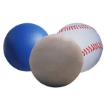
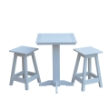





























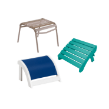





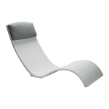







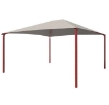
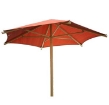
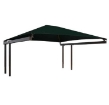
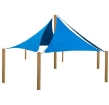
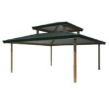
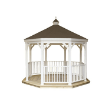
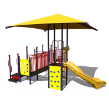











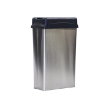




























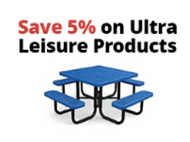




Leave your comment